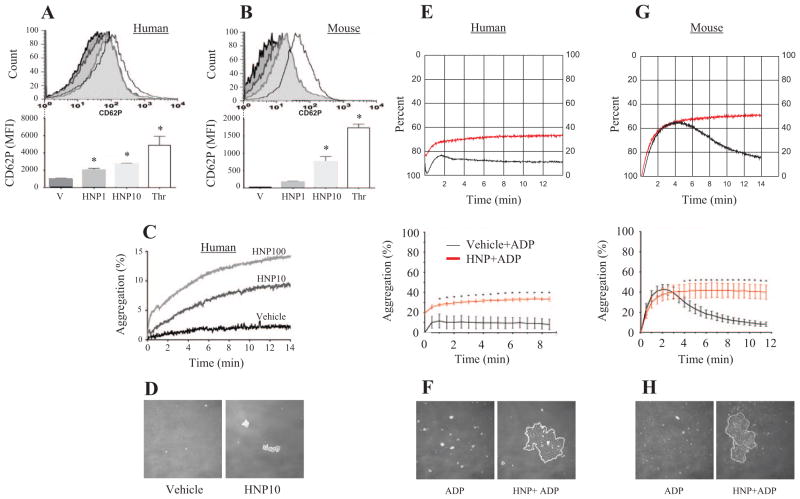Figure 3.
Human neutrophil peptides (HNPs) induce platelet activation. A and B, Surface expression of CD62P in human and murine platelet-rich plasma (PRP) stimulated with either HNPs (1, 10 μg/mL), vehicle control (V), or human α-thrombin (Thr) (5 U/mL). C, Dose-dependent increase in platelet aggregation in human PRP after stimulation with HNPs at 10 or 100 μg/mL. D, Thrombus formation after the HNP stimulation shown in C. E, HNP-induced human platelet aggregation and synergy with ADP. Human PRP was primed with HNPs (10 μg/mL) or vehicle control followed 2 minutes later by incubation with ADP (1.25 μmol/L). Platelet aggregation is illustrated by representative actual traces (top) and by average traces (bottom, n=7 experiments). F, Thrombus formation after the HNP stimulation shown in E. G, HNP-induced murine platelet aggregation and synergy with ADP. Murine PRP was primed with HNPs (10 μg/mL) or vehicle control followed 2 minutes later by incubation with ADP (5 μmol/L). Platelet aggregation is illustrated by representative actual traces (top) and by average traces (bottom, n=7 experiments). H, Thrombus formation after the HNP stimulation shown in G. *P<0.05 vs V group under identical conditions.

